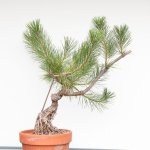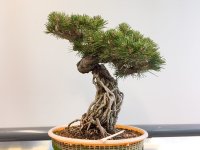Matt3839
Mame
I’ve watched a lot of exposed root videos on JBap and they all seem geared towards seedlings. I’ve got a 5 year old JBP with some 3 or 4 larger roots from the trunk. It’s planted in in a nursery container and I was wondering what the best way to develop it as an exposed root would be?
Should I wait till repot time and bare root the top half and fill in with large lava/pumice and wrap roots and put in a narrow container with a pond basket and finer particles below? This seems a little awkward since bare rooting pines isn’t advised.
or should I just remove the bottom of the nursery container and put in a pond basket with soil and gradually expose some roots since it has 3 or 4 thick roots from the trunk?
The roots at the bottom of the nursery container are all very fine and right now it’s potted in what looks like sand and bark chips.
Should I wait till repot time and bare root the top half and fill in with large lava/pumice and wrap roots and put in a narrow container with a pond basket and finer particles below? This seems a little awkward since bare rooting pines isn’t advised.
or should I just remove the bottom of the nursery container and put in a pond basket with soil and gradually expose some roots since it has 3 or 4 thick roots from the trunk?
The roots at the bottom of the nursery container are all very fine and right now it’s potted in what looks like sand and bark chips.











